To the Yorubas of Western Nigeria, Omi Obe is a ubiquitous stew/soup. Literarily translated as watery stew, it serves so many purposes and as a Nigerian home cook, it is one dish that should never be missing from your freezer. It will save you in many culinary emergencies, I speak from experience. For the flavour it packs, Omi Obe is surprisingly very simple to make with simple everyday ingredients.
Whenever I am in Lagos, my Sister-in-law and I go Buka surfing or revisit some of our favourite ones. No two buka stews taste exactly the same, but most are really, really good and the variety of meat can be overwhelming. In fact, some are so good you will be tempted to lick your plate. I also need to mention that my Rennaisance man loves Yoruba food having schooled and lived in western Nigeria, so some time ago, I went to understudy a ‘Yoruba madam’ and I am thoroughly pleased I did. Authentic delicious Omi Obe in my freezer all the time. Served with Plain Okro soup, Ewedu Soup, Efo, Eko (agidi), rice, plantain, beans etc.
About the ingredients of Omi Obe
Omi Obe is a watery, peppery, boiled stew and the seasoning is just salt and seasoning cubes. Do not add any other seasoning in either the stew or the meat when cooking. The addition of dry fish and stockfish is totally optional and don’t use strong tasting stockfish. The flavour of Omi Obe comes from the correct combination of tomato and peppers.
The amount of heat in the stew depends on your tolerance so the quantity of scotch bonnet (fresh pepper, ata rodo) stated here is only a guide. Also, different scotch bonnet peppers have different levels of heat and really there is no easy way of telling which will be very hot or which will be mild. I mostly go by the rule, ‘smaller pepper, hotter pepper’. Hmm…I will have to remedy that.
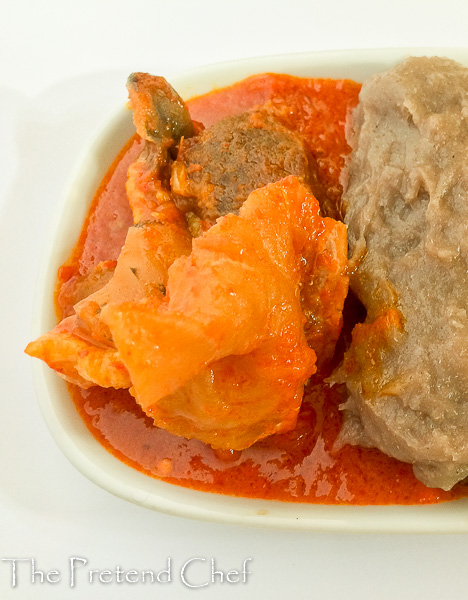
Assorted meat is normally used which is a combination of different parts of the cow, goat and whatever else pleases you. The assorted meat can be cut into small pieces, making it easy for you to pop into your mouth whole as you eat. You can fry or grill the meat before adding to the stew or add the meat after just boiling it. Either way, be sure the meat is very tender. I fry mine in a mix of vegetable and palm oil, then add a little bit of this oil into the stew close to the very end of my cooking. Do not fry the meat to brown or dry too much.
Some species of tomatoes are quite tart, see my post on Fresh tomato sauce about how to neutralise this tartness or acidity.
Omi Obe serves as a vehicle for different types of vegetables so as to make up complete soups e.g Plain okro, ewedu and gbegiri. Omi Obe can be used alone for rice, eko (agidi, corn paste pudding), yam, plantain, bread, beans, practically anything.
To prepare Omi Obe (Stew)
Meat (assorted) 1kg fresh tomato 80g shombo 320g tatashe 200g scotch bonnet (fresh pepper, ata rodo) 300g onions 170g sliced onions 2 cups palm oil 4 seasoning cubes salt Oil for frying meat
Wash meat very well especially the entrails.
Place in a pot with some water, add salt, some chopped onions and seasoning cubes.
Boil until meat is tender. You can cut some of them into smaller pieces at this stage.
Fry or grill meat and set aside.
Meanwhile, wash tomato, shombo, tatashe, scotch bonnet and 300g onions.
Remove the seeds of the tatashe and grind all together to a very smooth watery puree.
Wash and slice 170g onions and set aside.
Place a clean dry pot over high heat, add palm oil.
Heat palm oil until hot, pour in blended peppers, add sliced onions, seasoning cubes and salt.
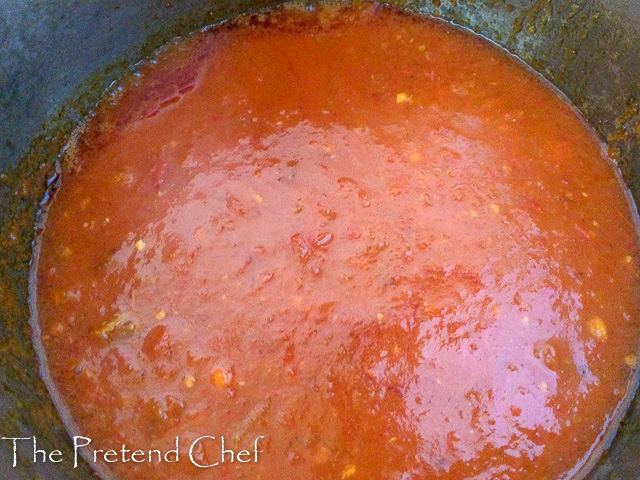
Cover and cook for 20 minutes until reduced and the oil has shown some separation from the peppers.
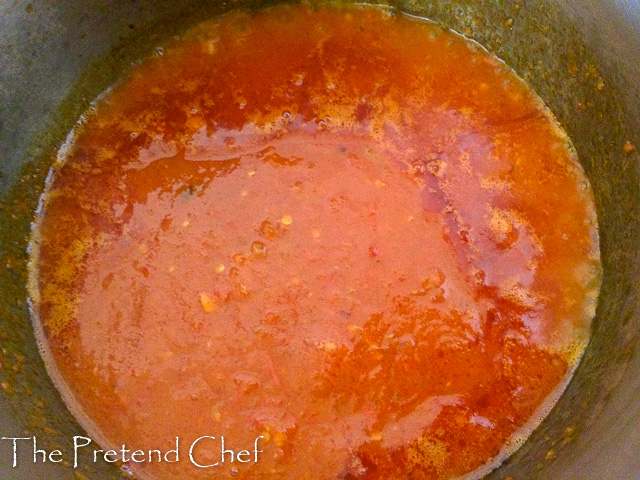
Pour in enough stock and water to thin down the stew, about 4 cups.
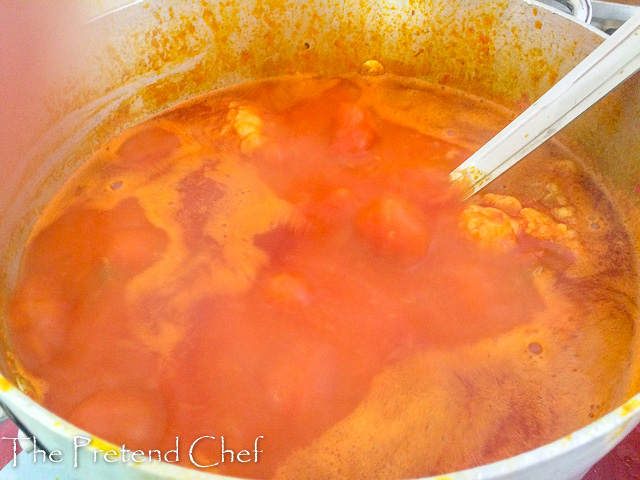
Add meat and dry fish (if using).
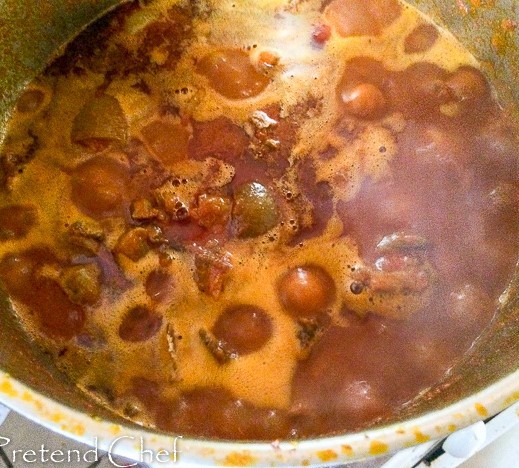
Add a little of the oil used in frying the meat, stir and cover.
Cook for 10 minutes, taste and correct seasoning.
Take off the heat. Serve with Plain Okro Soup, Ewedu Soup or Gbegiri soup.
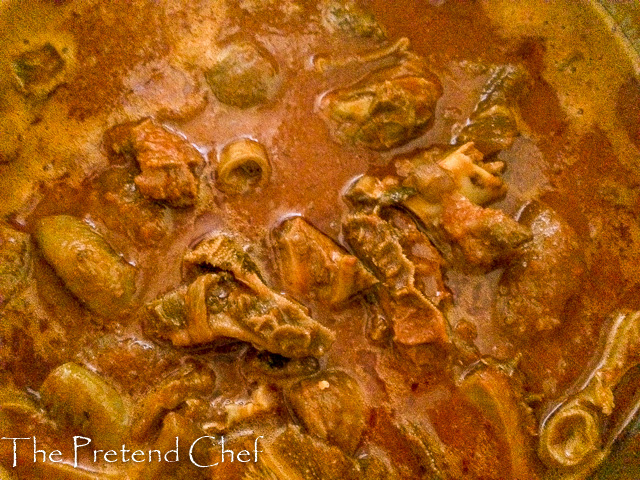
Note
- I fry my sliced onions in the oil before pouring in the pepper mix, some people don’t.
- When using entrails, wash stomach and intestines well. Turn intestines inside out and wash then turn out again.
- When cooking with assorted meat, start cooking the tough cuts of meat ahead of the more tender ones.
- If using dry fish e.g panla, dry catfish etc., add with the meat.
You will also enjoy my Easy Nigerian Tomato Stew, Palm nut stew, Nigerian boiled tomato stew, and Nigerian egg stew.
Do you have any comments, questions or suggestions, please leave a comment below.
Share this recipe using the share buttons. Subscribe to the blog for instant notifications of new recipes.
Follow on Instagram: @thepretendchefofficial, Twitter: @thepretendchef Facebook: https://web.facebook.com/thepretendchef/ and Pinterest: https://www.pinterest.com/thepretendchef/
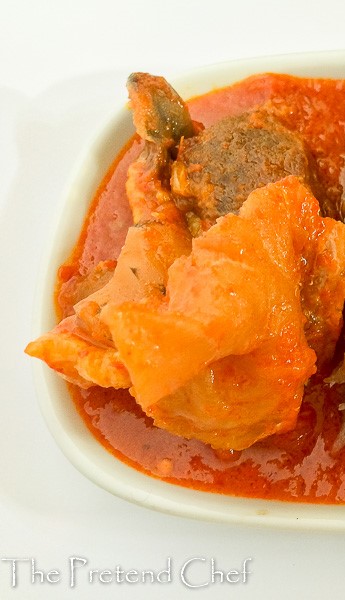
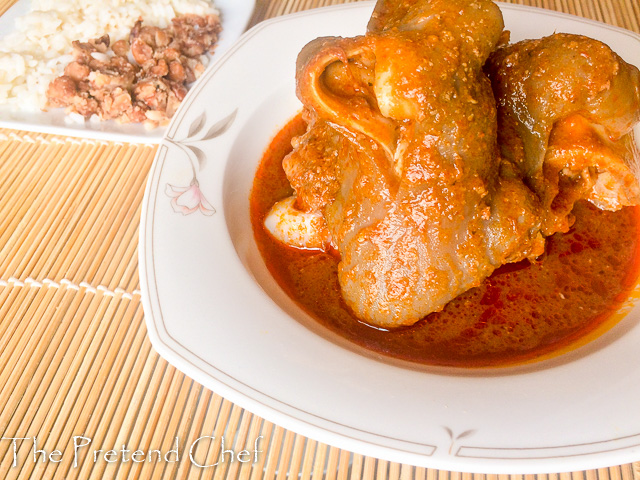
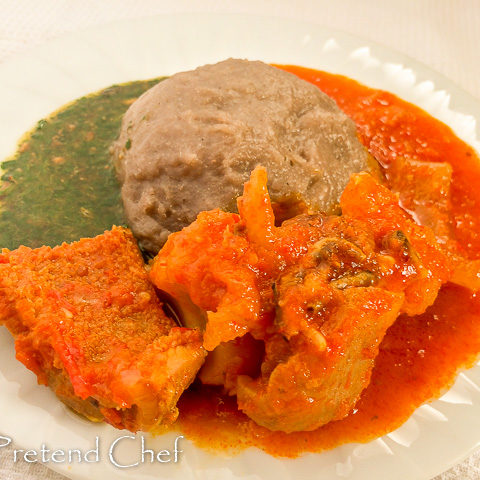
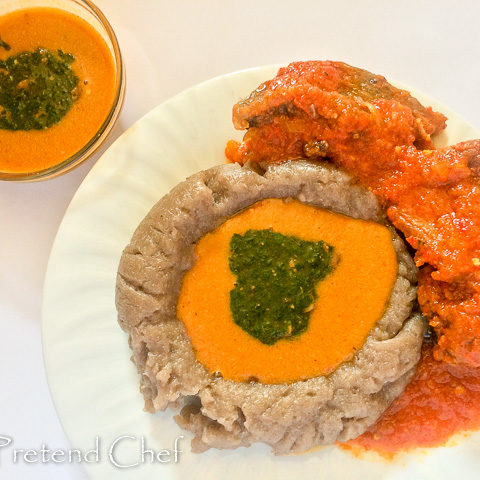
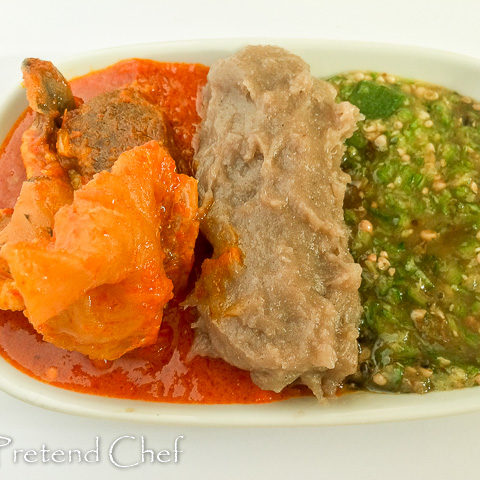
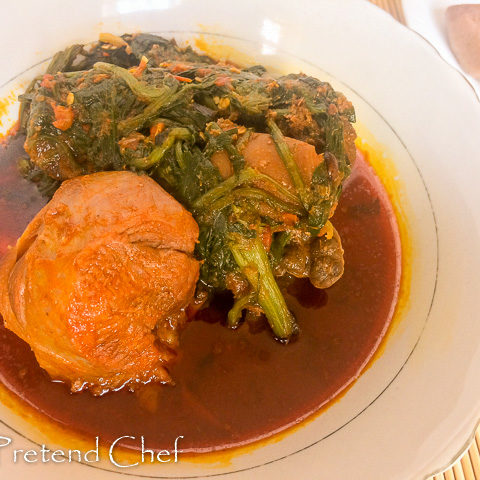
 I am Ganiru, a wife, a mother, a food blogger, a chef, an author and an accountant. I love to cook and write about food, especially Nigerian and afro-centric food...
I am Ganiru, a wife, a mother, a food blogger, a chef, an author and an accountant. I love to cook and write about food, especially Nigerian and afro-centric food...
Wow i love the food so delicious
Thanks so much
Can I prepare the stew without tatashe and shombo,cos I can’t seem to get it where I live
Hi Deborah, You can substitute tatashe and shombo with red bell pepper, fresno and cayenne or any sweet red peppers.
Pingback: okor soup – OSAJOY AFRICAN RECIPES
Pingback: Nigerian Fish Stew (Imoyo) - The Pretend Chef
Pingback: Cayenne Pepper Stew (Shombo Stew) - The Pretend Chef
Pingback: Plain Okro Soup (Ila) - The Pretend Chef
Pingback: Ewedu Soup - The Pretend Chef